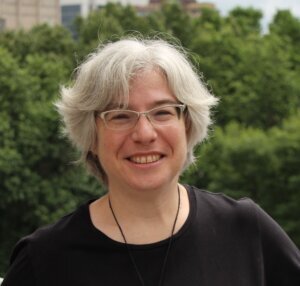A national survey of primary care physicians paints a grim picture for the future of health care in the U.S., but an advocate cites an example from Maryland as a sign of hope.
“Our latest survey showed that there are 62% of clinicians who personally know of somebody who has quit during the pandemic, about 30% personally know of practices that have closed, and there are 25% who say they are going to be leaving primary care within the next three years,” said Rebecca Etz, co-director of the Larry A. Green Center.
The center is a thought collective founded by Etz, of Virginia Commonwealth University, and Dr. Kurt Stange of Case Western Reserve University.
“Our population cannot survive without access to basic health care. And primary care is the entry point into the health care system,” Etz said.
The survey got responses from 847 clinicians in 49 states and D.C. Sixty-three percent of respondents identified their practice as family medicine, 11% as internal medicine, 5% as pediatrics, 3% as geriatrics and 4% as other. Information was gathered between Feb. 25 and March 1.

“We know from decades of research that if you want a well-functioning health care system, you have to have at least 40% of your workforce in primary care. We entered the pandemic with a workforce that was 33% primary care. And our medical schools were graduating people at a rate of 10% to 15% in primary care, so we had a workforce that was too small to be good. And it was going down, and that was before the pandemic,” Etz said.
If what people shared with the survey is accurate, Etz said, there’s been a meaningful shrinkage of the primary care workforce during the pandemic; and there aren’t enough people to maintain access to health care adequate for America’s population.
The ramifications could be enormous if examples from early in the pandemic are any indication.
“In March to June or July of 2020, in New York — where access to primary care was limited because the pandemic was hitting them so hard — mortality rates connected to chronic conditions like hypertension and diabetes went up by about 400% to 500%. That’s what lack of access to care brings you,” Etz said.
Other findings from the survey:
- Fewer than a quarter of practices report being fully staffed.
- 36% of primary care clinicians felt burnout at an all-time high.
- 53% expressed that their ability to bounce back has been limited.
- 62% of 847 clinicians had personal knowledge of other primary care clinicians who retired early or quit during the pandemic.
- 29% knew of practices that had closed up shop.
- One in four physicians plans to retire early in the next three years due to being overwhelmed by the pandemic.
Practices are also struggling financially. Nearly one-third (32%) reported having current billing either denied or well overdue from insurers or health plans.
While all this might sound discouraging, Etz still thinks the future is bright.
The survey’s executive summary states that: “Simultaneous with these obstacles, clinicians also report increased volunteerism, new services to lessen burden on the health system, and expanded levels of practice-provided assistance to address patients’ social vulnerabilities.”
And there are other encouraging signs.
There is a new initiative to strengthen primary health care that was created by Health and Human Services Secretary Xavier Becerra, and a recent report by the National Academy of Sciences, Engineering, and Medicine details how to implement high quality primary care.
“It’s the first report like that in a generation. I was on that committee and it offers up some very basic recommendations. We need only the will to follow it,” Etz said.
While Etz said the U.S. has anemically supported primary care for decades, she cites Maryland as an example of the impact that’s possible with proper intervention.
“Medicare primary care practices in the state of Maryland that had been properly supported because they participated in a government program that gave them extra support – they recently published that the COVID-related mortality among their patient population, again, a Medicare population, was 20% lower than other practices in the state of Maryland,” she said.
But nearly half of the surveyed clinicians (46%) say primary care is crumbling.
“There are a lot of good people working on it,” she said. “We just have to inspire people to have the will to act on what we know.”
(CORRECTION: This story has been updated to reflect that the Medicare program is run in collaboration with CMMI and Maryland.)








